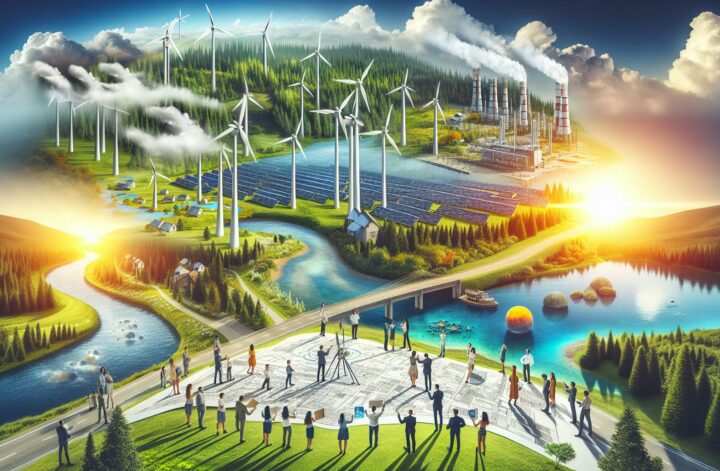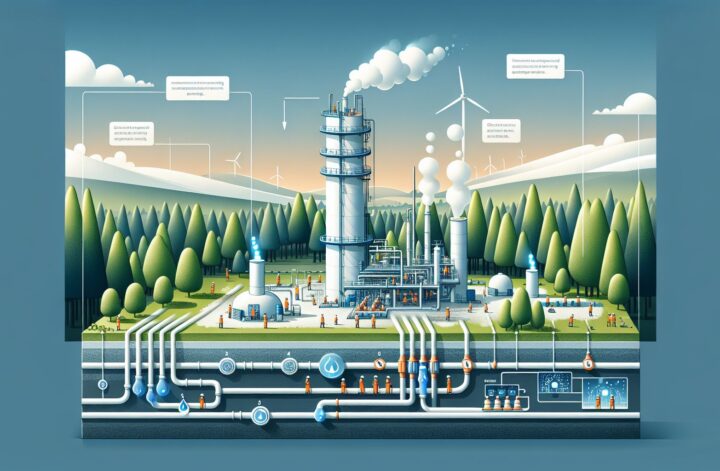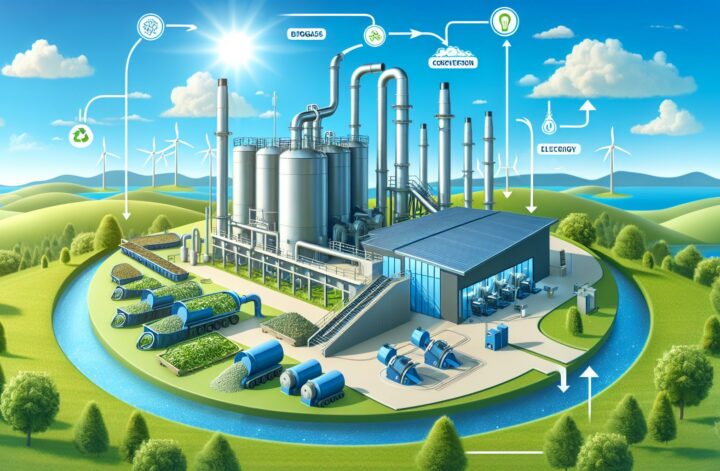In an era characterized by increasing environmental consciousness, concerted attention is being directed towards renewable energy sources. Fossil fuels have for too long monopolized the energy industry, leading to unsustainable climate effects. Now, the world is turning a collective gaze toward renewable energy, and justifiably so. From hydro to wind and solar, there is enormous untapped potential in renewable power sources, waiting to be harnessed. This article will painstakingly explore the intricacies of renewable energy, particularly its diverse range, advantages, challenges, and future prospects.
What is Renewable Energy?
By definition, renewable energy is derived from the limitless natural processes cycling endlessly, hence its synonym, “endless energy. This includes sunlight, wind, rain, tides, waves, and geothermal heat. The International Energy Agency (IEA) outlines four main benefits of renewable energy: sustainable sanitation, reduced dependence on energy imports, reduced greenhouse gas emissions and, encompassing the prior three, sustainable development[^1^].
Diverse Range of Renewable Energy Sources
Numerous sources of renewable energy, each possessing unique properties, can be tapped into.
Solar Energy
Simply put, solar energy is derived from the sun. Photovoltaic cells, or solar cells, convert sunlight directly into electricity.
Wind Energy
Wind power turns the kinetic energy from wind into mechanical power. A wind turbine is typically used for this function. This mechanical power can be utilized for specific tasks, and the surplus can be transformed into electricity, stored, and used later.
Hydroelectric Energy
This source captures the energy derived from flowing water. It is the largest source of renewable energy in the U.S., constituting about 6.1% of total utility-scale electricity generation and 44% of total renewable electricity generation in 2019[^2^].
Geothermal Energy
Geothermal power is derived from the earth’s heat and used to generate electricity and to heat buildings.
Biomass Energy
Biomass energy, or bioenergy, is produced from organic materials—forestry residues, dedicated energy crops, and animal manure, among others. It can be used to generate electricity and heat, or converted into biofuel.
The Advantages of Renewable Energy
Enhanced Environmental Health
Perhaps the most blatant advantage of renewable energy is its eco-friendly attributes. Unlike fossil fuels—a significant contributor to the greenhouse effect and global warming—renewable energy sources emit very little, often no greenhouse gases.
Renewability and Inexhaustibility
Renewable energies are recurring in nature. Thus, they are retrievable in perpetuity without the fear of exhaustion, in stark contrast to fossil fuels.
Economic Benefits
Renewable energy industries are labor-intensive compared to fossil fuels, and hence, generate more jobs. Solar and wind energy protagonists outpaced the coal industry in the creation of jobs, as mentioned in a report by the U.S. Department of Energy[^3^].
Challenges Facing Renewable Energy
Despite the progressive status of renewable energy, it is not without obstacles. Some common challenges include:
High Initial Costs
Although the cost of renewable energy technologies has steadily decreased over the years, the initial cost can be daunting, sometimes serving as an impetus for starting renewable energy projects.
Dependence on Weather
Renewable energy sources significantly depend on weather conditions. For instance, inadequate sunlight can negatively affect solar power, while wind turbines are useless in calm weather.
Space Requirements
Especially for wind and solar power, extensive land or water areas are required, some of which may be better used for other applications.
The Future of Renewable Energy
The future of renewable energy is promising. Constant innovations and technological advancements are helping to overcome these hitches, leading to a more sustainable future.
Furthermore, public sentiment has also started to favor renewables. With increasing awareness about the detrimental impacts of fossil fuels on the environment and public health, more and more people are advocating for the transition to renewable energy.
In conclusion, the need for renewable energy has never been more profound. Its varied sources and uses make it an adaptable and viable solution for the future. Despite present challenges, its potential is immense, and with continued commitment and innovation, the renewable energy revolution will only escalate.
[^1^]: International Energy Agency. (2020). Renewable energy. https://www.iea.org/topics/renewable-energy
[^2^]: U.S. Energy Information Administration. (2021). Hydroelectric power and water. https://www.eia.gov/energyexplained/hydropower/
[^3^]: U.S. Department of Energy. (2017). U.S. Energy and Employment Report. https://www.energy.gov/sites/prod/files/2017/01/f34/2017%20US%20Energy%20and%20Jobs%20Report_0.pdf




